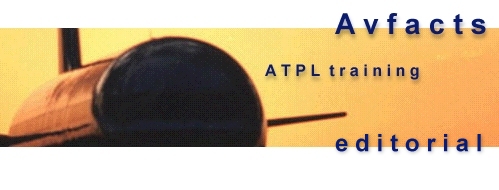|
Swept wings naturally stall at the tips
first. This is due the air approaching the leading edge of the wing
deflecting upwards (called upwash), thereby increasing the effective
angle of attack. Also, with the tips being of quite thin section, they
tend to stall first. The stalled air moves forwards and inwards as A of
A is increased toward the stall speed. This is undesirable, as the
outboard ailerons quickly become within the stalled air and lose their
control effectiveness.
The swept wing aircraft will continue
to nose-up despite a large percentage of the wing having stalled, as the
centre of lift moves forward, creating a runaway pitch-up couple with
the C of G. We are approaching a condition called the “super-stall”,
or deep-stall”. This is definitely a case of negative pitch
(longitudinal) stability. Refer fig Lift 1.
A flat spin is possible, and it may be
un-recoverable due to the lack of elevator effectiveness, as this
control surface can be blanketed and buffeted in the aerodynamically
dead turbulent air streaming back and upward from the stalled wing. This
is especially true in the case of aircraft that feature a high mounted
tailplane (“T” tails). Refer fig Lift 2.
 |
 |
| Fig
Lift 1. Centre of lift moves forward as stall advances forward and
inward from tips. An adverse nose-up couple is created. |
Fig
Lift 2. “T” tail aircraft with stalled turbulent air blanketing
the tailplane. |
|










